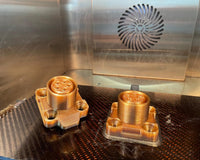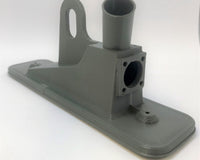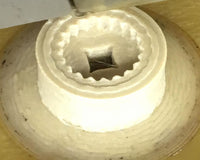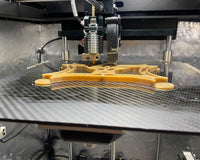Motor Neuron Disease (MND) can be a devastating condition, particularly when it leads to hand-wrist muscle atrophy, severely affecting patients' daily activities and social interactions. Traditional hand-wrist orthosis has its limitations, failing to keep up with the rapid progression of the disease and the diverse needs of individual patients. This study is exploring the potential of 3D printing technology to revolutionize MND care.
In this pioneering research, two lattice structures inspired by silkworm cocoons were designed and fabricated using Facilan™ PCL 100 Filament as the feedstock material. The magic lies in the three-dimensional (3D) printing approach, which allows for customization and precision to meet each patient's unique requirements.

To ensure optimal performance, the researchers employed the Finite Element Method (FEM) analysis, studying the mechanical behavior of the lattice structures. This method provided valuable insights into the stress distribution during tensile displacement and three-point bending simulations. Remarkably, Geometry-1 demonstrated anisotropic behavior, while Geometry-2 exhibited symmetrical and uniform node positioning, removing the need for strict directional dependence.
But that's not all - biocompatibility was a top priority in this study. Testing the lattice structures with human skin fibroblasts showed excellent biocompatibility, making them safe and reliable for human use.
The study went the extra mile by involving MND patients in the design process. Through insightful semi-structured interviews, researchers gathered valuable feedback to create form-fitting 3D-printed lattice-based hand-wrist orthosis prototypes. This approach ensures that the final product is not only effective but also tailored to suit the individual's needs and preferences.
The potential impact of this research is tremendous. By harnessing the power of 3D printing technology, the study aims to provide a game-changing solution that can effectively support weakened muscles and reposition the hand for individuals living with MND. This level of personalization has the potential to enhance patients' quality of life and empower them in their daily activities and social interactions.
We salute the researchers behind this innovative study, as they push the boundaries of medical technology to make a real difference in the lives of MND patients. Together, we are witnessing the dawn of a new era in healthcare, where cutting-edge advancements bring hope and progress to those facing the challenges of debilitating diseases. Let's celebrate the potential of 3D printing in transforming lives and opening up new possibilities for the future of medical care.
Read the full article in the following link, https://www.mdpi.com/2227-9059/11/7/1787.






